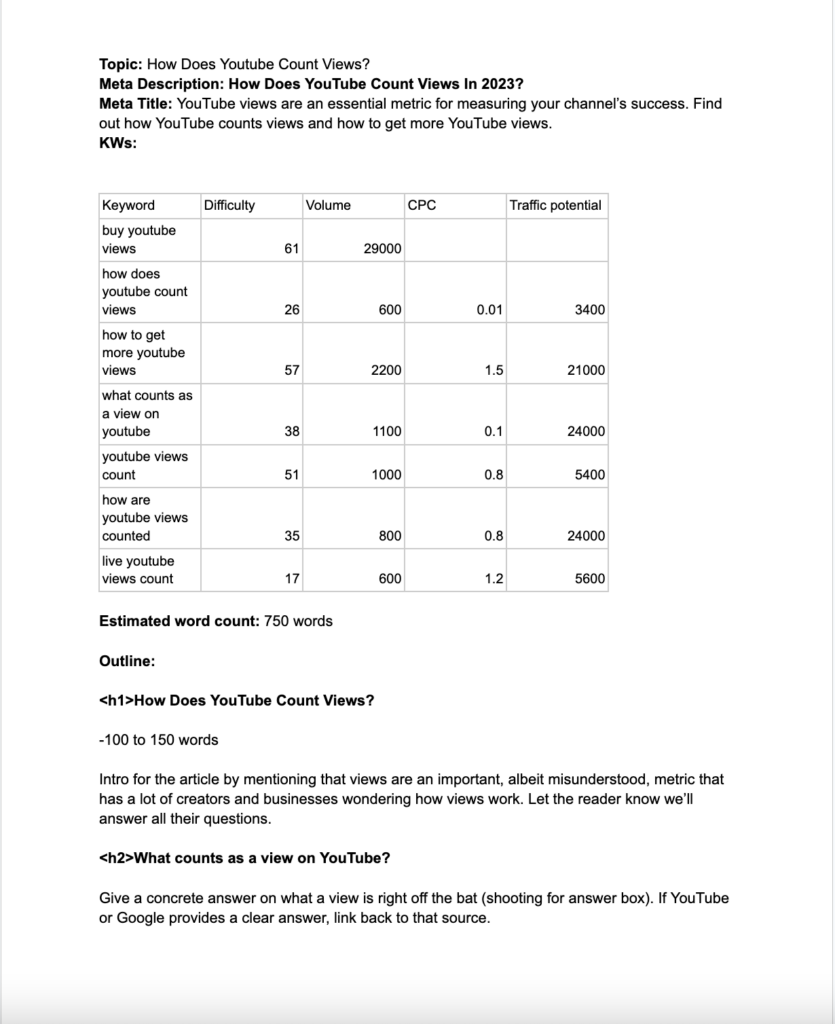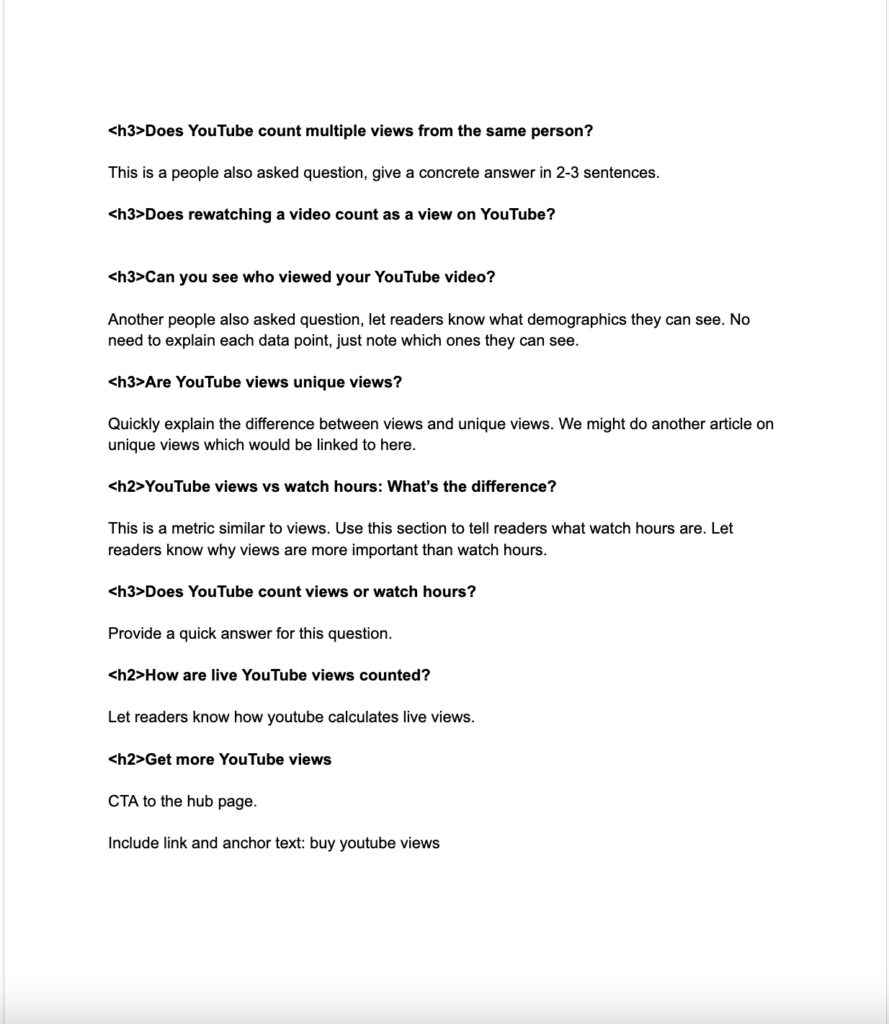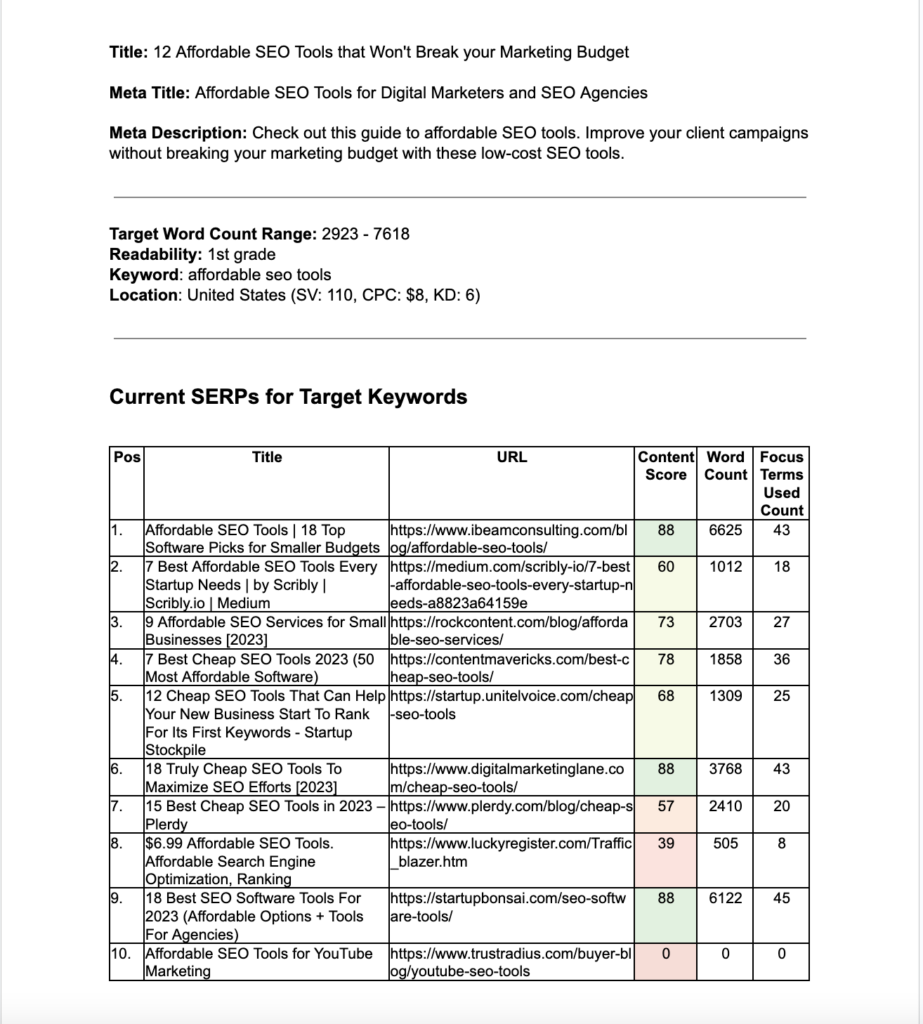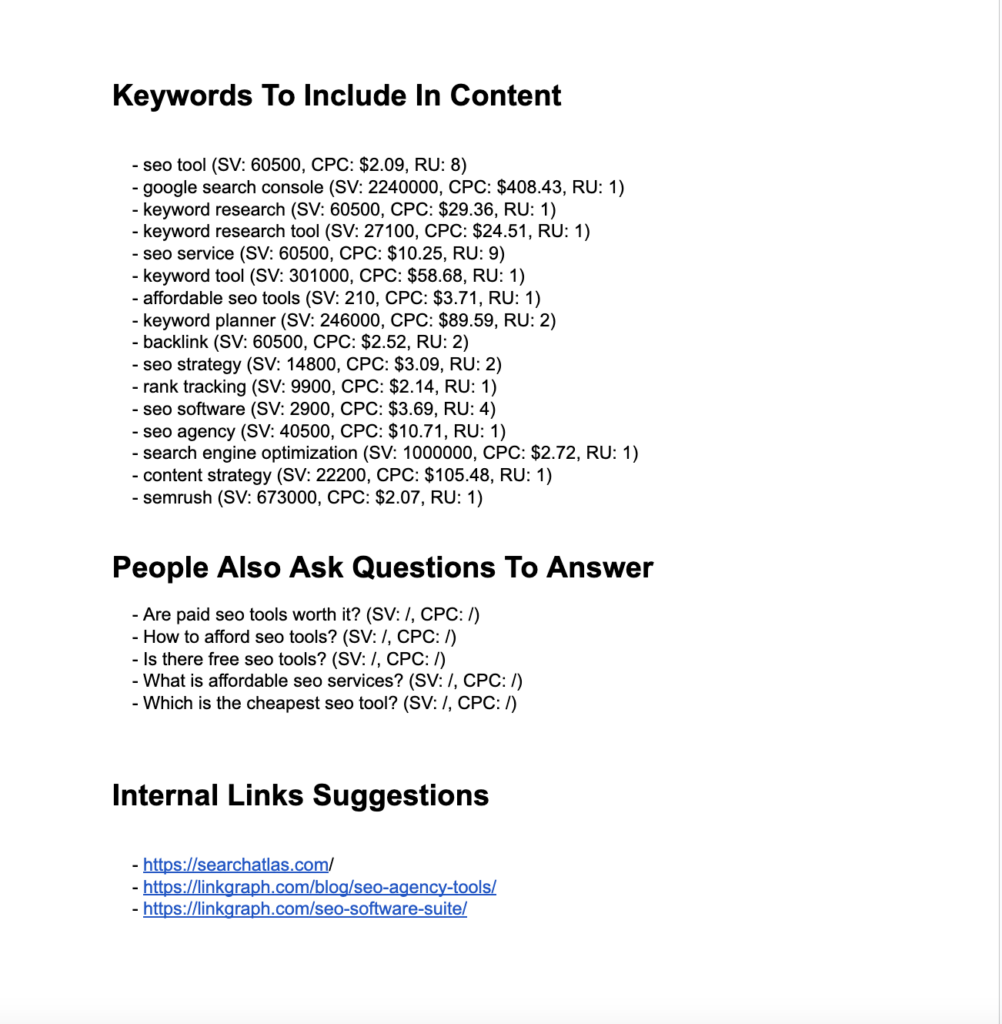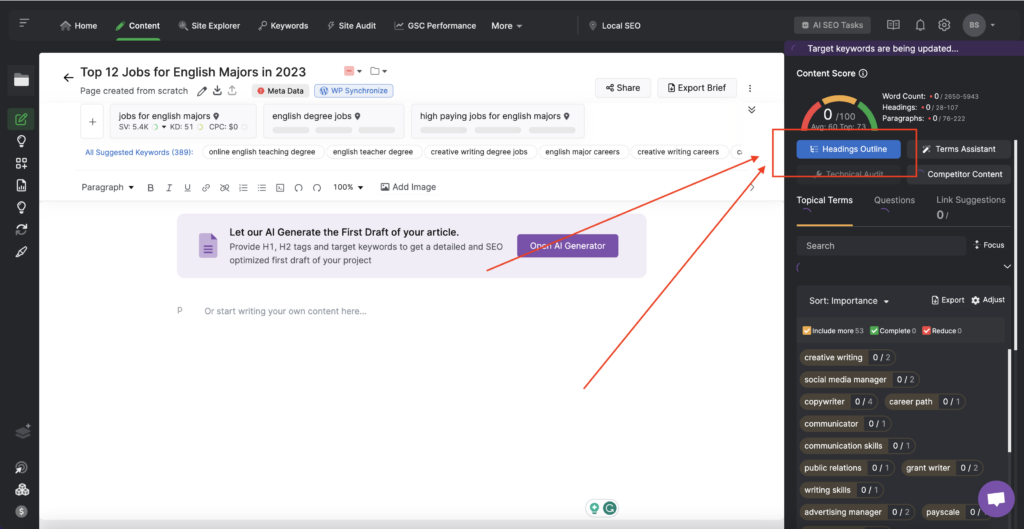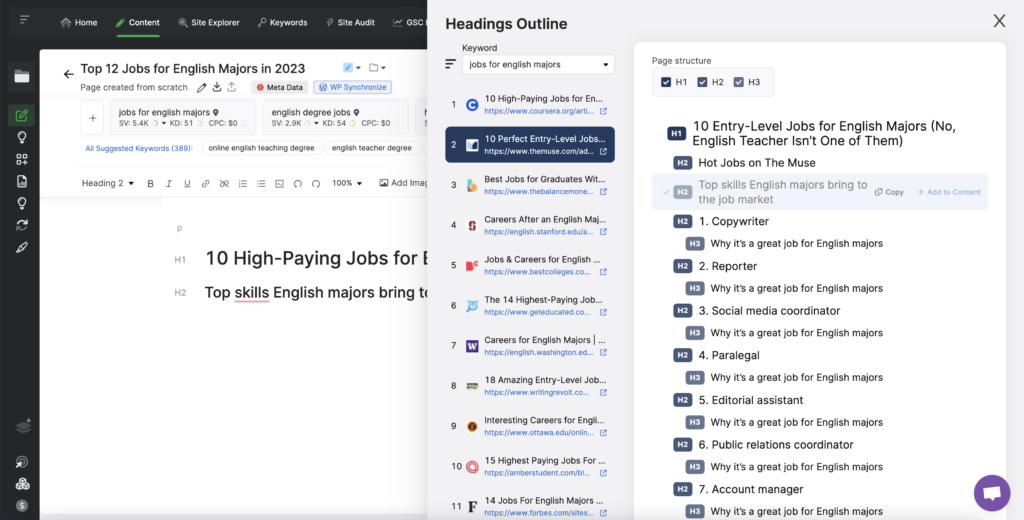A Guide to Creating SEO Content Briefs | Examples + Free Template
Learn what’s included in an SEO content brief and see real-life examples by marketers. Plus, get our free content brief template!
For content marketing teams, content briefs play a major role in guiding content writers toward high-quality, high–performing content. For SEO content specifically, SEO content briefs communicate the most important on-page factors that will help improve the ranking potential of content for specific keywords.
In this guide, you will learn all about content briefs, from what should be included in a brief to templates and examples. In addition, this guide will break down how to use SEO software to generate content briefs more quickly and efficiently.
What is an SEO Content Brief?
An SEO content brief is a detailed document that outlines the guidelines and specifications for creating search-engine-optimized content.
It serves as a roadmap for content creation, ensuring that the content aligns with the goals and objectives of the website while also optimizing it to rank well in search engine results.
Overall, an SEO content brief is a vital tool in the content creation process. It helps content creators understand the goals, target audience, and requirements for the content, allowing them to produce high-quality content that is optimized for both search engines and users.
What is Included in a Content Brief?
What individual marketing or SEO teams choose to include in a content brief may vary, but basic content briefs typically include the following information for the content creator:
- Title: The title of the article or main topic of the content
- Target keywords: The specific keywords and phrases that the content should rank for in search engine results
- Meta Description: An optimized meta description that includes the target keyword or variations of the primary keyword
- Word count: The content length, usually determined by the word count of top-ranking results for the target keywords
- Writing style/Tone of Voice: The style based on the intended audience, such as technical, professional, formal, casual, or conversational
- Content-Type: Such as a blog post, a roundup, or listicle-style article
- Readability/Grade Level: How difficult or easy the content is to read
- Desired outcome: Whether a click, a submission form, or some other conversion action encouraged by a CTA
A more complex content brief, or one designed to help create content with the highest ranking potential in search engines, may also include the following elements:
- Secondary keywords: Related or similar keywords to the primary target
- Optimized H2s: A content outline or structure with various subtopics; or how the content should be organized
- People Also Ask Questions: Common questions users are asking in search engines in relation to the primary keyword
- Search Intent: The identified search intent of the keyword target, whether transactional, commercial, informational, or navigational
- Focus Terms: Recommended terms that appear in the top-ranking content
- Suggested Internal Links: Relevant pieces of content to link to within the body of the article
With these elements included in an SEO content brief, the content creator will know exactly how to create a high-quality SEO content deliverable.
Content Briefs and Marketing Workflows
In traditional content production, a content strategist or content manager generates a content brief. Then, they hand the document over to a content writer to begin the writing process.
Once the content writer has completed the content, they will send it back to the content manager for editorial review.
The content may go through several rounds of revisions before it is handed over to the client or published live on a website.
Benefits of Content Briefs to Marketing Teams
For content teams, like a content writing agency that produces content on behalf of clients, content briefs play an important role in streamlining and optimizing the content marketing workflow.
Why? Because content briefs:
- Help ensure every piece of content aligns with the overall SEO strategy
- Eliminate the need for extensive rewrites or revisions
- Provide a roadmap for creating content that has the best chance of ranking in the SERPs
- Communicate the search intent of the target audience
- Document the website’s brand voice, style guide, and buyer personas
- Assist in developing a deliverable that matches the client’s expectations
If your marketing team or agency is not yet using content briefs in your content marketing process, you are likely missing out on many of the above benefits.
Examples of SEO Content Briefs
There are many potential formats for an SEO content brief, but here are some examples of real content briefs produced by SEO and content marketing strategists.
SEO Content Brief Example #1
In this content brief, the strategist has made clear to the content writer the strategic goals of the content. The strategist has also already done the work of optimizing the most important SEO meta tags, including the page title, meta description, and H2s.
The content marketer has also provided brief instructions on what content should be included in each section. These instructions include adding internal links, and CTAs, as well as what questions should be answered within the body of the content.
SEO Content Brief Example #2
Similarly to content brief #1, this SEO content brief includes the strategic purposes of the content, including the target keywords.
However, instead of outlining the content with H2s, this SEO strategist provided a list of keywords or topics with semantic relevance that the content should include.
As seen by these two examples, there is no one right way to generate a content brief. But if the goal of your content is to rank in search engines, the information provided should help the writer create content with strong quality signals.
How to Generate a Content Brief in Search Atlas
Content marketers and strategists can also use the power of artificial intelligence and enterprise SEO software to generate content briefs more quickly.
Software tools that generate content briefs leverage the power of data scraping and artificial intelligence (like chat-GPT).
For Search Atlas users, you can generate content briefs and outlines in the SEO Content Assistant tool.
- Start by entering your target keyword/s and click “Generate Article”.
- Give the article a title
- Select additional keyword targets (optional)
- Navitage to “Headings Outline”
- Review headings use in competitor content
- Click “Add to Content” whenever you find a heading that you would like to include
- Add in your brand voice and make adjustments to your headings so the article is original, unique, and helpful to your target audience
- Click “Export Content Brief”
The software will take you to a new browser window in Google Docs. The document will include a detailed content brief that you can edit, adjust, or hand off to your content writing team.
Content Brief Template for Content Marketers
Our team at LinkGraph wants to help you create better content briefs! If you have not yet registered for a free trial of our software, why wait?
With access to our SEO software, you can start generating high-quality SEO content briefs faster than ever.
For a comprehensive analysis of your website’s SEO performance, consider taking advantage of our free SEO audit.
Or, feel free to use our free content brief template to provide your content writers with all of the information they need to create rank-worthy content.












































































